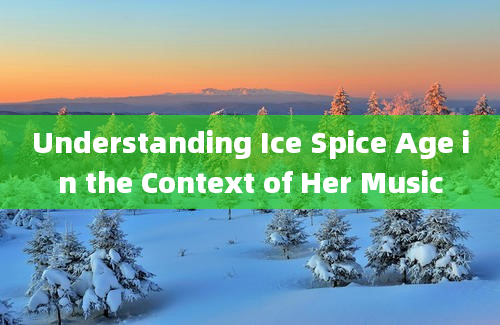The Age of Our Planet: A Comprehensive Look at Earth's History

Understanding the age of our planet is a fundamental aspect of Earth sciences. The Earth's history spans billions of years, marked by significant geological, biological, and climatic changes. This article delves into the scientific methods used to determine Earth's age, the major epochs in its history, and the key events that have shaped our planet.
Determining Earth's Age
The age of the Earth is estimated to be approximately 4.54 billion years, with a margin of error of about 50 million years. This estimation is primarily based on radiometric age dating of meteorite material and Earth's oldest rocks, as well as the ages of lunar samples brought back by the Apollo missions.
1. Radiometric Dating: This technique measures the decay of radioactive isotopes within minerals. For instance, uraniumlead dating has been instrumental in determining the age of the Earth. According to the U.S. Geological Survey (USGS), the oldest known terrestrial rocks, found in the Canadian Shield, are about 4.03 billion years old [U.S. Geological Survey](https://www.usgs.gov/faqs/howoldisearth).
2. Meteorite Dating: Meteorites, which are remnants from the early solar system, provide a reference for the age of the Earth. Studies by the Smithsonian Institution indicate that meteorites are about 4.56 billion years old, suggesting that the Earth formed shortly thereafter [Smithsonian Institution](https://airandspace.si.edu/stories/editorial/howoldisearth).
3. Lunar Samples: The Apollo missions brought back lunar rocks that have been dated to around 4.51 billion years, further corroborating the age of the Earth [NASA](https://www.nasa.gov/feature/factsandfigures).
Major Epochs in Earth's History
Earth's history is divided into several eons, eras, periods, and epochs, each marked by distinct geological and biological events.
1. Hadean Eon (4.54 4.0 billion years ago): This eon is characterized by the formation of the Earth and its initial cooling. The Hadean is marked by intense volcanic activity and the late heavy bombardment, a period of frequent asteroid impacts.
2. Archean Eon (4.0 2.5 billion years ago): The first stable continental crusts formed during this eon. The Archean also saw the emergence of the first living organisms, as evidenced by fossilized microbial mats known as stromatolites [Nature](https://www.nature.com/articles/nature21023).
3. Proterozoic Eon (2.5 billion 541 million years ago): This eon witnessed significant developments, including the Great Oxidation Event around 2.4 billion years ago, which dramatically increased atmospheric oxygen levels. The Proterozoic also saw the formation of complex multicellular life.
4. Phanerozoic Eon (541 million years ago present): This eon is divided into three eras: the Paleozoic, Mesozoic, and Cenozoic. It is characterized by the proliferation of complex life forms, including the Cambrian Explosion, the age of dinosaurs, and the rise of mammals.
Key Events in Earth's History
1. Formation of the First Continents: The first continents, such as Ur and Vaalbara, formed during the Archean Eon. These early landmasses played a crucial role in the development of Earth's atmosphere and hydrosphere.
2. Great Oxidation Event: This event, occurring around 2.4 billion years ago, was a pivotal moment when cyanobacteria began producing oxygen through photosynthesis, leading to significant changes in Earth's atmosphere [Science](https://www.sciencemag.org/news/2014/10/whendidearthfirstbreatheoxygen).
3. Cambrian Explosion: Approximately 541 million years ago, there was a rapid diversification of multicellular life forms, marking the beginning of the Phanerozoic Eon. This event saw the emergence of most major animal phyla [Nature](https://www.nature.com/articles/nature21023).
4. Mass Extinctions: Earth has experienced several mass extinction events, the most famous being the CretaceousPaleogene extinction event 66 million years ago, which led to the demise of the dinosaurs and paved the way for mammalian dominance.
Conclusion
The Earth's history is a testament to the dynamic and everchanging nature of our planet. Through advanced scientific methods, we have been able to piece together a comprehensive timeline that spans billions of years, highlighting the key events and epochs that have shaped the world we live in today.
Frequently Asked Questions (FAQs)
1. How old is the Earth?
Answer: The Earth is approximately 4.54 billion years old, with a margin of error of about 50 million years, as determined through radiometric dating of meteorites and Earth's oldest rocks [U.S. Geological Survey](https://www.usgs.gov/faqs/howoldisearth).
2. What is radiometric dating?
Answer: Radiometric dating is a technique used to measure the decay of radioactive isotopes within minerals to determine the age of rocks and fossils. It is a key method for establishing the geological time scale [U.S. Geological Survey](https://www.usgs.gov/faqs/howoldisearth).
3. How did scientists determine the age of the Earth using meteorites?
Answer: Scientists determined the age of the Earth by dating meteorites, which are remnants from the early solar system. These meteorites have been found to be about 4.56 billion years old, providing a reference for the age of the Earth [Smithsonian Institution](https://airandspace.si.edu/stories/editorial/howoldisearth).
4. What is the Hadean Eon?
Answer: The Hadean Eon is the earliest eon in Earth's history, spanning from 4.54 to 4.0 billion years ago. It is characterized by the formation of the Earth, intense volcanic activity, and the late heavy bombardment [Nature](https://www.nature.com/articles/nature21023).
5. What was the Great Oxidation Event?
Answer: The Great Oxidation Event occurred around 2.4 billion years ago when cyanobacteria began producing oxygen through photosynthesis, leading to a significant increase in atmospheric oxygen levels [Science](https://www.sciencemag.org/news/2014/10/whendidearthfirstbreatheoxygen).
6. What is the Cambrian Explosion?
Answer: The Cambrian Explosion was a period approximately 541 million years ago when there was a rapid diversification of multicellular life forms, marking the beginning of the Phanerozoic Eon and the emergence of most major animal phyla [Nature](https://www.nature.com/articles/nature21023).
7. How did the first continents form?
Answer: The first continents, such as Ur and Vaalbara, formed during the Archean Eon through the process of partial melting and differentiation of the Earth's crust, leading to the formation of stable landmasses.
8. What caused the CretaceousPaleogene extinction event?
Answer: The CretaceousPaleogene extinction event, which occurred 66 million years ago, is believed to have been caused by a massive asteroid impact, leading to the extinction of the dinosaurs and many other species [NASA](https://www.nasa.gov/feature/factsandfigures).
9. How have lunar samples contributed to our understanding of Earth's age?
Answer: Lunar samples brought back by the Apollo missions have been dated to around 4.51 billion years, providing a crucial reference for the age of the Earth and corroborating radiometric dating results [NASA](https://www.nasa.gov/feature/factsandfigures).
10. What are stromatolites, and why are they important in Earth's history?
Answer: Stromatolites are fossilized microbial mats created by cyanobacteria. They are important because they provide some of the earliest evidence of life on Earth, dating back to the Archean Eon, and offer insights into the early development of life and the Earth's atmosphere [Nature](https://www.nature.com/articles/nature21023).










